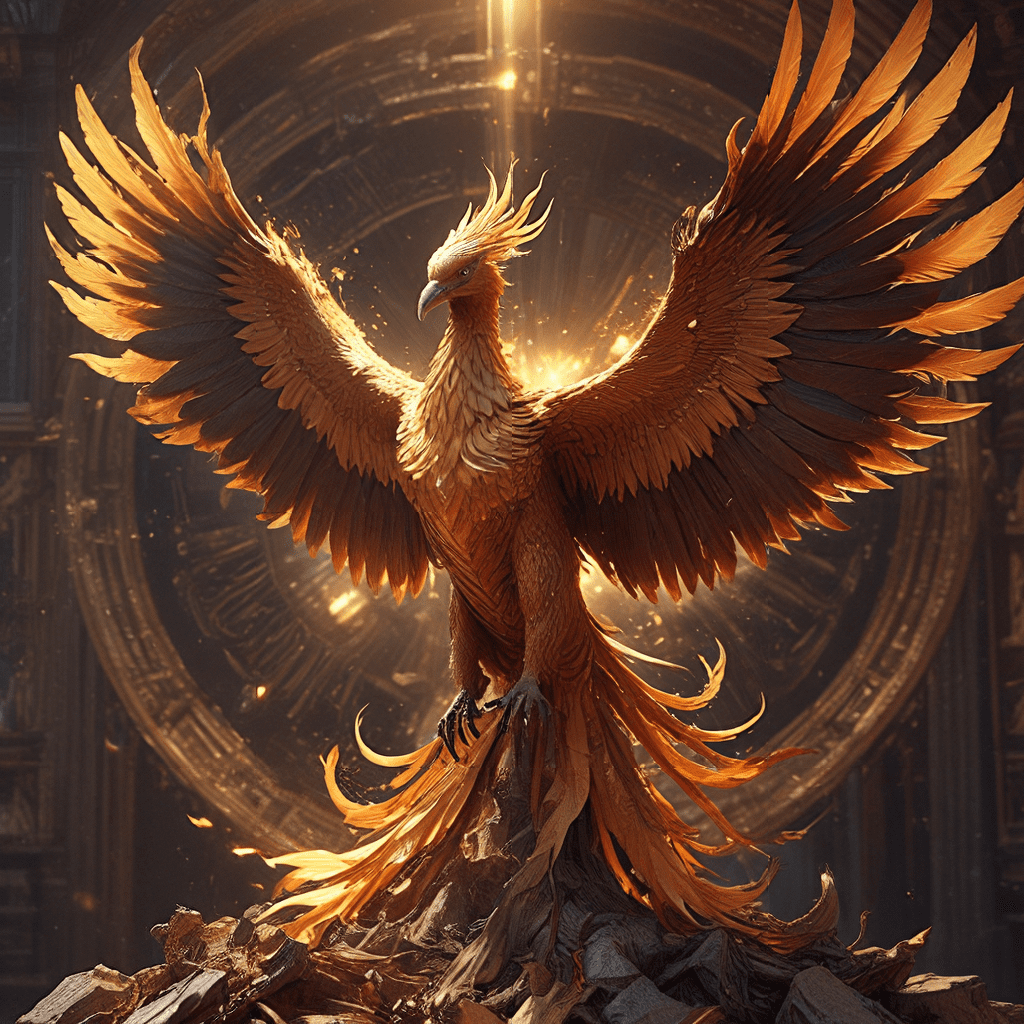The Phoenix: A Mythological Bird of Fire
The phoenix, a mythical creature known for its fiery rebirth, has captivated the imaginations of people for centuries. This magnificent bird, often depicted with brilliant golden plumage, holds a powerful symbolism of renewal, immortality, and the cyclical nature of life. Its story has been told and retold across cultures, leaving an enduring legacy that continues to inspire and fascinate.
Origins and Early Representations
The earliest known representations of the phoenix can be traced back to ancient Egypt, where it was associated with the sun god Ra. In Egyptian mythology, the phoenix was known as the “bennu,” a sacred bird that embodied the cycle of life, death, and rebirth. It was often depicted in hieroglyphs and paintings, soaring through the sky, its wings adorned with the sun’s rays.
The phoenix was also a popular motif in ancient Greek mythology, where it was associated with the sun god Helios. In Greek legends, the phoenix was said to live for 500 years, after which it would build a nest of cinnamon and myrrh, burn itself to ashes, and then rise from the ashes as a young bird, ready to begin its life anew. This cycle of death and rebirth symbolized the eternal cycle of life, and the phoenix became a symbol of hope, resilience, and the triumph of life over death.
The Phoenix in Egyptian Mythology
In Egyptian mythology, the Phoenix, known as the “bennu,” played a significant role. It was believed to be a manifestation of the sun god Ra, who was responsible for the creation of the world and the cycle of day and night. The bennu’s fiery rebirth was seen as a parallel to the sun’s daily journey across the sky, symbolizing its resurrection and renewal.
The bennu was also associated with the concept of Maat, the Egyptian goddess of cosmic order and justice. The phoenix’s ability to rise from its ashes represented the restoration of balance and harmony after periods of chaos. Its presence in ancient Egyptian art and literature suggests its importance in their cultural beliefs and practices.
The Phoenix’s Cycle of Rebirth
The phoenix’s most defining characteristic is its ability to rise from its ashes. This cycle of rebirth is a central theme in its mythology, representing the cyclical nature of life, death, and reemergence. The phoenix’s death is not an ending but a transformation. Once the phoenix reaches the end of its lifespan, it builds a pyre, a funeral pyre, where it sets itself ablaze. From the ashes, a new phoenix emerges, symbolizing the eternal cycle of life and the triumph of hope over despair.
Symbolism of the Phoenix: Rebirth and Immortality
The phoenix is a powerful symbol of rebirth and immortality. Its ability to rise from the ashes represents the renewal of life, overcoming adversity, and the triumph of hope. Beyond the physical rebirth, the phoenix is also seen as a symbol of spiritual renewal, representing transformation and the potential for personal growth. It teaches that even though we may face challenges and setbacks, we can rise again, stronger and wiser in the face of adversity.
The Phoenix and the Sun
The phoenix is often associated with the sun, sharing its symbolic connection with light, warmth, and life-giving energy. In many cultures, the phoenix is seen as a representation of the sun’s diurnal journey, rising in the east, soaring across the sky, and setting in the west, only to rise again the next day. This celestial dance mirrors the phoenix’s cycle of rebirth. The phoenix’s fire represents the sun’s heat and its transformative power. Ancient beliefs connect the phoenix to the sun’s power to bring life and growth to everything on Earth.
The Phoenix in Art and Literature
The phoenix has been a popular subject in art and literature throughout history. From ancient Egyptian hieroglyphs to Renaissance paintings, from medieval tapestries to contemporary novels and films, the phoenix has been portrayed in various artistic mediums. Its fiery rebirth has inspired countless works of art and literature, making it one of the most enduring and captivating mythological creatures.
The Phoenix in Other Cultures
While the phoenix is most closely associated with Egyptian and Greek mythology, it has found its way into the folklore and mythology of other cultures around the world. In China, the phoenix is known as the “feng huang,” a mythical creature representing harmony, good fortune, and prosperity. The phoenix also appears in the mythology of the Native American tribes in North America, symbolizing creation, transformation, and the power of nature. The phoenix’s story, though rooted in ancient traditions, has transcended cultural boundaries, leaving its mark on the collective imagination of humanity.
The Phoenix in Modern Culture
The phoenix continues to be a powerful and relevant symbol in modern culture. The phoenix’s enduring message of resilience and hope continues to inspire and resonate with people all around the world. We see its image in logos and emblems, representing brands and organizations committed to innovation and growth. The phoenix is a symbol of the human spirit’s ability to overcome adversity and emerge stronger and more resilient. It’s a reminder that even in the face of challenges, there is always hope for a brighter future.
The Enduring Legacy of the Phoenix
The phoenix is more than just a mythical creature; it is a powerful symbol that has resonated with humanity for centuries. Its enduring legacy speaks to its timeless message of renewal, hope, and resilience. The phoenix reminds us that even in the face of adversity, we have the power to rise from the ashes, transform, and create something new and beautiful. The phoenix’s story is a testament to the enduring human spirit and its ability to overcome challenges and rise again.




